Quantification of microenvironmental metabolites in murine cancers reveals determinants of tumor nutrient availability
- PMID: 30990168
- PMCID: PMC6510537
- DOI: 10.7554/eLife.44235
Quantification of microenvironmental metabolites in murine cancers reveals determinants of tumor nutrient availability
Abstract
Cancer cell metabolism is heavily influenced by microenvironmental factors, including nutrient availability. Therefore, knowledge of microenvironmental nutrient levels is essential to understand tumor metabolism. To measure the extracellular nutrient levels available to tumors, we utilized quantitative metabolomics methods to measure the absolute concentrations of >118 metabolites in plasma and tumor interstitial fluid, the extracellular fluid that perfuses tumors. Comparison of nutrient levels in tumor interstitial fluid and plasma revealed that the nutrients available to tumors differ from those present in circulation. Further, by comparing interstitial fluid nutrient levels between autochthonous and transplant models of murine pancreatic and lung adenocarcinoma, we found that tumor type, anatomical location and animal diet affect local nutrient availability. These data provide a comprehensive characterization of the nutrients present in the tumor microenvironment of widely used models of lung and pancreatic cancer and identify factors that influence metabolite levels in tumors.
Keywords: biochemistry; cancer; cancer biology; chemical biology; mass spectrometry; metabolism; metabolomics; microenvironment; mouse; pancreatic adenocarcinoma.
© 2019, Sullivan et al.
Conflict of interest statement
MS, CL, SC, TK, ED No competing interests declared, LD, DG, AM has applied for patents for therapeutic strategies to target cancer metabolism (US Patent App. 15/890,220). MV Reviewing editor, eLife; has applied for patents for therapeutic strategies to target cancer metabolism (US Patent App. 15/890,220); Advisor for Agios Pharmaceuticals, Aeglea Biotherapeutics, Auron Therapeutics
Figures




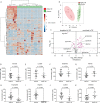

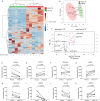
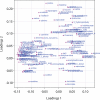


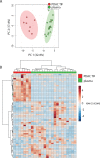




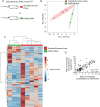



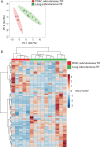





References
-
- Bardeesy N, Aguirre AJ, Chu GC, Cheng KH, Lopez LV, Hezel AF, Feng B, Brennan C, Weissleder R, Mahmood U, Hanahan D, Redston MS, Chin L, Depinho RA. Both p16(Ink4a) and the p19(Arf)-p53 pathway constrain progression of pancreatic adenocarcinoma in the mouse. PNAS. 2006;103:5947–5952. doi: 10.1073/pnas.0601273103. - DOI - PMC - PubMed
Publication types
MeSH terms
Grants and funding
LinkOut - more resources
Full Text Sources
Other Literature Sources
Molecular Biology Databases

